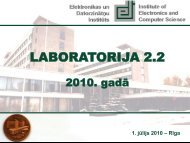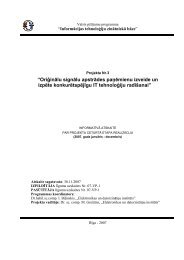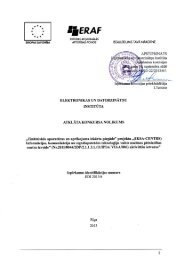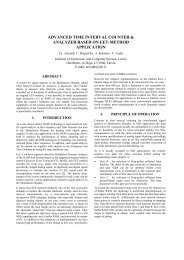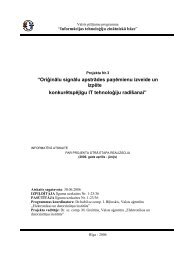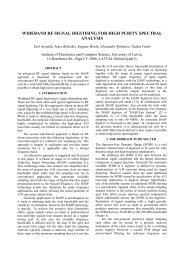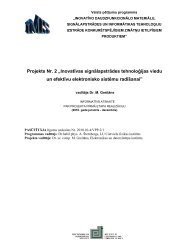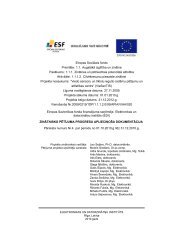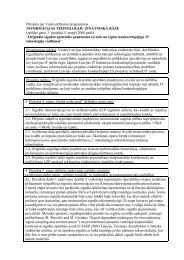A032-ET - International Laser Ranging Service
A032-ET - International Laser Ranging Service
A032-ET - International Laser Ranging Service
You also want an ePaper? Increase the reach of your titles
YUMPU automatically turns print PDFs into web optimized ePapers that Google loves.
Event Timer <strong>A032</strong>-<strong>ET</strong>2. Main features of the Event Timer2.1. ArchitectureLike most of the virtual instruments, the <strong>A032</strong>-<strong>ET</strong> performs its measurement functions partly byhardware means and partly by software means. The measurement software provides interfacingwith a user program via TCP/IP network on the basis of well-known “Client/Server” scheme(Fig.1). The user program can control the <strong>A032</strong>-<strong>ET</strong> via this interface and receive measurementdata from for further specific-application processing. This is not quite the usual way ascompared to another ways of connecting devices to user’s PC (such as parallel ports, serialports and USB). However the network connection offers capacities that are inaccessible for themost of conventional connections, especially in the case of designing distributed timingsystems. At the same time the network interface based on TCP/IP standards is quite get-at-ablefor users as almost all Software Development Kits contain the library with the required TCPfunctions.In terms of the Client/Server architecture the<strong>A032</strong>-<strong>ET</strong> can be considered as combination ofa specialised timing device (subsequentlyreferred to as <strong>ET</strong>-device), and a specialisedServer (subsequently referred to as <strong>ET</strong>-server)dedicated both to managing the <strong>ET</strong>-device andprocessing the timing data obtained from it(Fig.1). In this case the <strong>ET</strong>-client is a PC onwhich user runs his application, using thespecific <strong>ET</strong>-server resources via network. Notethat in many cases a single PC under MS-Windows can serve as both the <strong>ET</strong>-server andthe <strong>ET</strong>-client although use of a separate PC forthe <strong>ET</strong>-server is preferable to achieve thehighest operating speed.<strong>ET</strong>-deviceMeasurementsoftwareNetwork connectionFig.1. Network architecture of the Event TimerThe <strong>ET</strong>-device is compatible with different options of the <strong>ET</strong>-server software, providing differentmodes of the timer operation. Currently two kinds of <strong>ET</strong>-server software are available,specifying the option (either <strong>A032</strong>.1 or <strong>A032</strong>.2) of the Event Timer <strong>A032</strong>-<strong>ET</strong> as a whole. Any ofthese options can be used alternatively depending on the current user task.Event Timer <strong>A032</strong>-<strong>ET</strong><strong>ET</strong>-serverInputsTCP/IPPCInteraction via EPPTCP/IPPCUser program<strong>ET</strong>-client2.2. Principles of operationThe <strong>A032</strong>-<strong>ET</strong> performs the measurement of input events in two stages. At first, the <strong>ET</strong>-devicetransforms every input event into single 80-bit timing data block (subsequently referred to asTD-block) and sequentially accumulates such TD-blocks in a buffer FIFO memory. Each TDblockcontains the rough data (39 bits) and interpolating data (40 bits) about the time of eventincoming, as well as one-bit mark specifying the input (either A or B) providing the measuredevent. Note that the interpolating data are presented initially in an intermediate redundant formand needs further an additional processing by the <strong>ET</strong>-server.The used unconventional method of time interpolation supports both high precision and highspeed. Specifically, using 100 MHz internal clocks it provides each single measurement with



